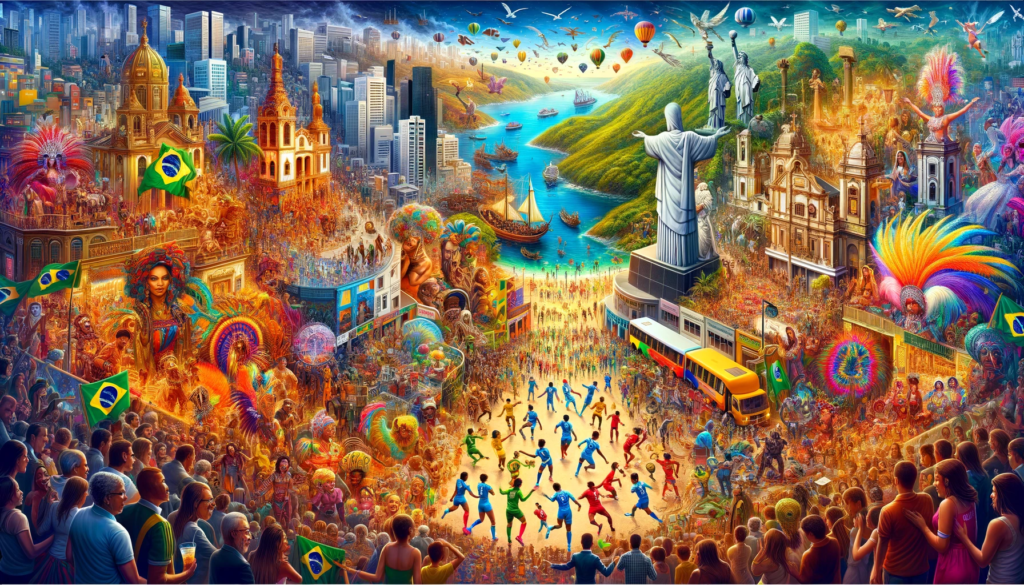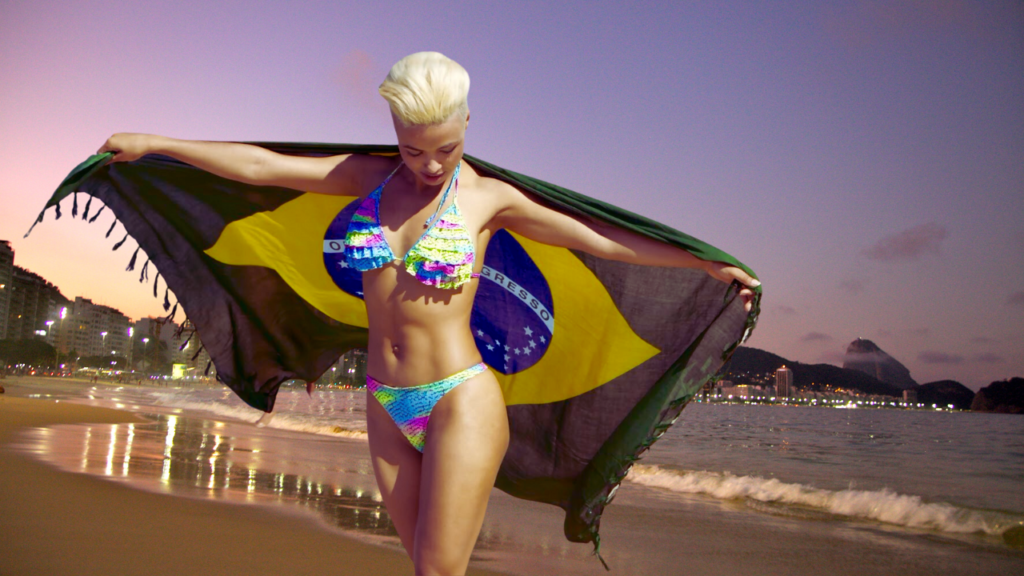
Introduction
Brazil, a country of striking contrasts and unparalleled beauty, is often evoked in the global imagination through vibrant images of Carnaval and football euphoria. However, these iconic representations only skim the surface of the rich cultural and social tapestry that defines this giant nation. In this blog, we delve beyond the stereotypes to explore the true essence of Brazil.
We will begin by examining how Brazil’s international image, dominated by Carnaval and football, starkly contrasts with the complexity and richness of its cultural and social realities. Then, we will delve into the role of religion and cultural traditions, highlighting the unique syncretism that characterizes Brazilian faith. In the sports section, we will highlight how football is more than just a game in Brazil, impacting social and political life, and how women are emerging as key figures in this and other areas.
Each section of this blog offers a window into the different aspects of Brazil, revealing a country where diversity is the norm and resilience a constant. Through this journey, we will discover that Brazil is much more than Carnaval and our beloved football: it is a country of continuous innovation, rich history, and the potential for a bright future.
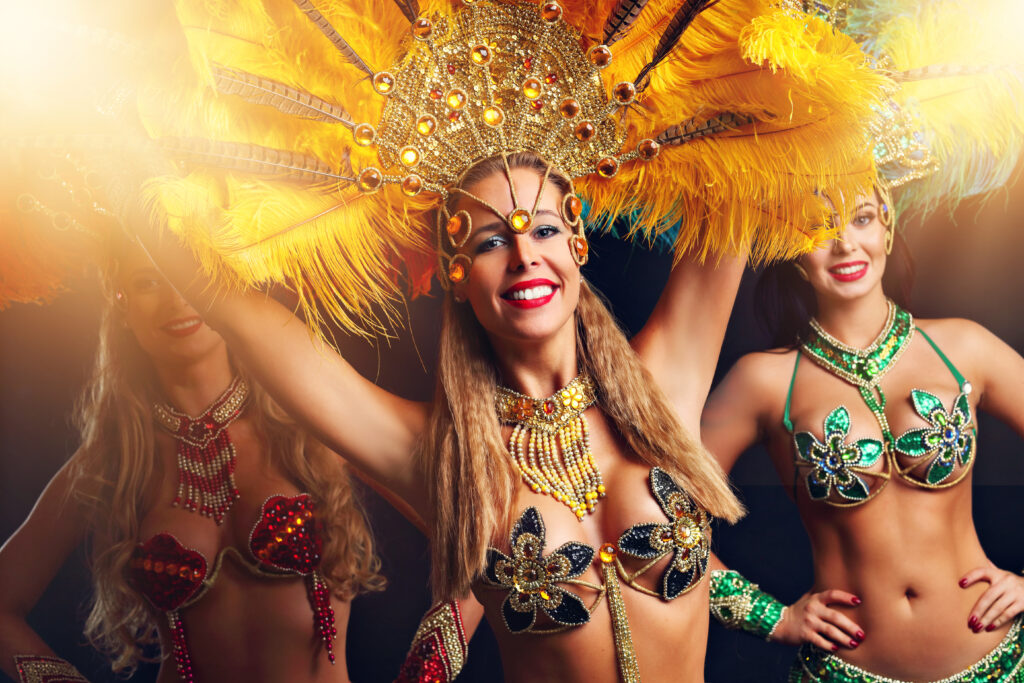
The International Image of Brazil and Reality
Carnaval and football are, without a doubt, Brazil’s most recognized emblems on the world stage. The former, with its explosion of colors, music, and dance, symbolizes the joy and festive spirit of the Brazilian people. The latter, a passion that transcends borders, is synonymous with exceptional skill and love for the game. However, this view often eclipses the diversity and nuances of an incredibly complex nation.

Beyond the frenzy of Carnaval and the passion for football, Brazil presents a society of deep contrasts. Here, technological innovation and traditional practices coexist; bustling cities contrast with stunning natural landscapes. These contrasts reflect Brazil’s history, marked by periods of colonization, the influence of immigration, and political and economic changes over the years.


The Influence of Religion and Cultural Traditions
Religion in Brazil is a mosaic of beliefs and practices. The Catholic heritage, brought by Portuguese colonizers, intertwines with African traditions and indigenous beliefs, creating a distinctive religious syncretism. This blend is evident in festivities like Candomblé and Umbanda, where African deities are venerated alongside Catholic saints.
Religious festivities in Brazil go beyond simple observance; they are a vibrant expression of faith and culture. The procession of Círio de Nazaré in Belém and the celebration of Iemanjá on the beaches of Salvador are examples of how religion intertwines with everyday life, reflecting the country’s diversity and spiritual richness.

Sports in Brazil and the Role of Women
In Brazil, football is more than a sport; it is a cultural institution. It is a realm where passions, identities, and sometimes social and political tensions are played out. However, the impact of sports in Brazil goes beyond football stadiums. In recent years, women have begun to take a more prominent role in sports, challenging gender norms and gaining recognition in disciplines such as volleyball, judo, and women’s football.
Figures like Marta, known as “The Pelé in skirts,” have redefined what it means to be an athlete in a football-obsessed country. Her success and that of many other female athletes are challenging traditional perceptions and paving the way for future generations of women in sports in Brazil and around the world.

Communication and Expression in Brazilian Life
Communication in Brazil transcends words; it is a dance of non-verbal expressions and styles reflecting the country’s cultural diversity. Animated gestures and physical proximity characterize daily interactions, demonstrating the warmth and openness of the Brazilian people. Fashion, in particular, is a vibrant expression of Brazilian culture. Reflecting the country’s diversity, from relaxed beachwear to sophisticated urban trends, fashion in Brazil is a testament to creativity and adaptability.
In cities like São Paulo and Rio de Janeiro, fashion is a platform for self-expression. Here, current trends include a mix of traditional styles with contemporary global influences. Brazilian designers like Alexandre Herchcovitch and Lenny Niemeyer have gained international recognition, bringing Brazil’s innovation and color to the world fashion stage.

Diversity and Resilience in Brazil
Music and art in Brazil mirror its cultural diversity and resilient spirit. From the contagious melodies of samba and bossa nova to innovative expressions of contemporary art, each art form tells a story of resistance and adaptation. Brazilian music, in particular, has been a platform for social and political expression, addressing themes of inequality, identity, and social change.
Artists like Gilberto Gil and Caetano Veloso, pioneers of the Tropicalia movement, used their music to challenge the military dictatorship and promote social change. In visual art, artists like Cândido Portinari and Beatriz Milhazes have captured the complexity of Brazil, from its social challenges to its exuberant nature.
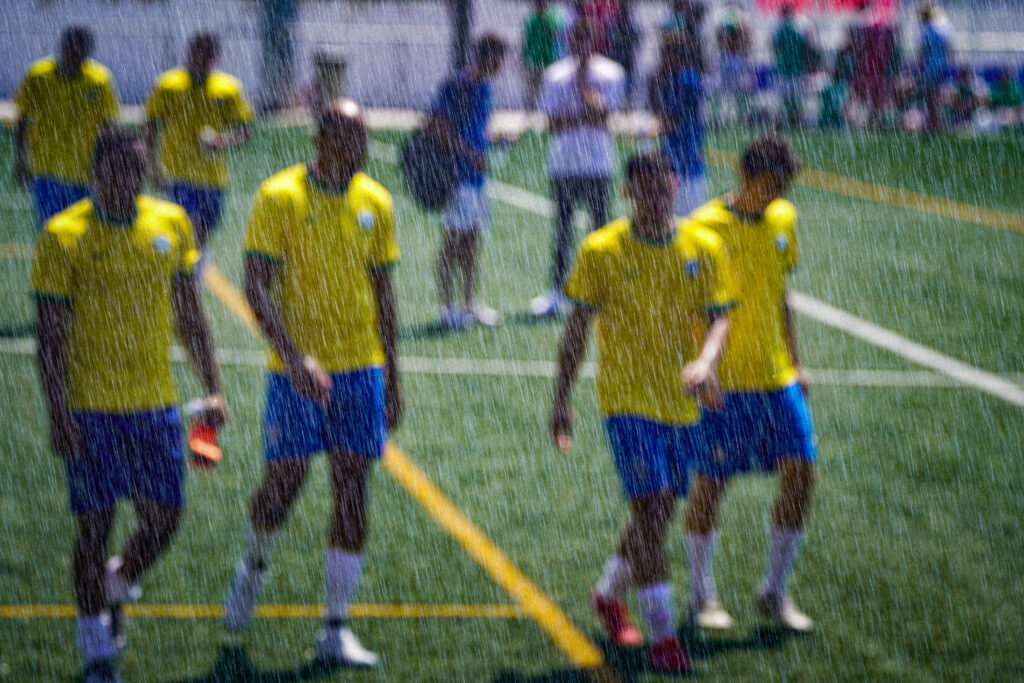
Art and Entertainment in Brazil
Cinema: Brazilian cinema is a window into the social reality of the country. Films like “City of God” and “Aquarius” have showcased the ability of Brazilian filmmakers to capture the complexity of their society, addressing themes of inequality and resistance.
Theater: Theater in Brazil, from popular theater to avant-garde productions, is a space for social critique and experimentation. Playwrights like Nelson Rodrigues and groups like Os Satyros have challenged social and political norms through their works.
Music and Dance: Brazil is synonymous with music and dance. Styles like forró and axé celebrate the country’s cultural diversity, while the famous Carnaval is an explosion of creativity and cultural expression.
Visual Arts: The visual art scene in Brazil is dynamic and diverse. Artists like Adriana Varejão and Vik Muniz have gained renown for their innovative approaches that explore Brazilian identity and history.
Literature: Brazilian literature offers a rich exploration of national identity. Writers like Clarice Lispector and Jorge Amado have captured the essence of Brazil in their works.
Digital Media: With a booming television and digital entertainment industry, Brazil produces a wide range of content that reflects and shapes its culture and society.
Homosexuality and Transgender in Brazil
The LGBT+ community in Brazil has made significant strides in the fight for equality and respect. However, it still faces considerable challenges. The legalization of same-sex marriage in 2013 was a major milestone, but discrimination and violence remain daily realities.
Activists like Jean Wyllys and Luiza Bairros have been instrumental in promoting LGBT+ rights. Through their work, they have sought not only legal acceptance but also cultural and social change toward greater inclusion and respect. Their stories and those of many others in the LGBT+ community in Brazil are testimonies of courage, love, and the ongoing struggle for equality.
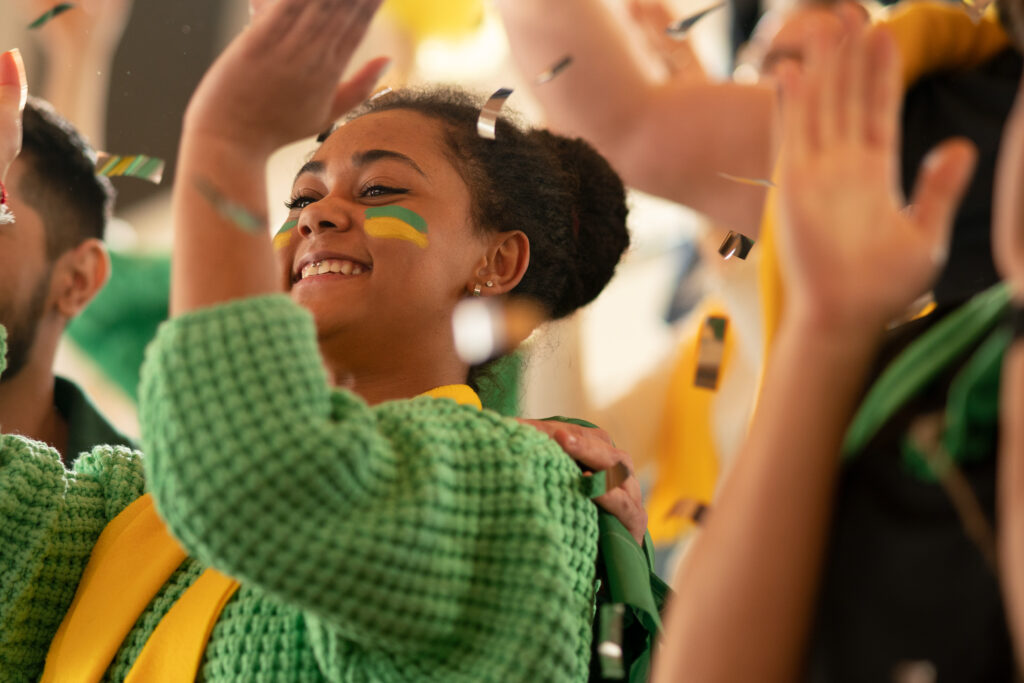
Conclusion
Throughout this blog, we have embarked on a journey through the fascinating and multifaceted nation of Brazil, a country that constantly challenges stereotypes and enriches our understanding of human diversity and resilience. From the vibrancy of its Carnaval and passion for football to the depths of its rich cultural and social heritage, Brazil reveals itself as a cultural giant full of contrasts and surprises.
We have explored how, beyond the popular icons, life in Brazil is imbued with a religious and cultural syncretism that defines its inclusive and diverse spirit. In sports, especially football, we have seen how women are redefining traditional roles and leading with strength and determination. Communication and fashion in Brazil reflect a society that values expressiveness and individuality, while music and art highlight its resilience and ability to address and adapt to social and economic challenges.
In cinema, theater, music, dance, visual arts, literature, and digital media, Brazil continues to demonstrate its ability to tell stories that resonate globally, always maintaining its unique cultural roots. The LGBT+ community in Brazil, despite significant challenges, continues to fight tirelessly for equality and respect, showing the unbreakable spirit of the country.
Brazil is, in essence, a country of astonishing contrasts and rich diversity. Brazilian culture is a vibrant tapestry woven with the threads of its complex history, ethnic diversity, and innovative spirit. This blog has been a tribute to Brazil, a nation that not only captivates and surprises the world but also offers valuable lessons on the importance of inclusion, adaptability, and the celebration of human diversity.
For more insightful explorations into the world’s cultures, visit Between Entre Mundos with Marciah on YouTube and join our community of curious and open-minded individuals. https://www.youtube.com/@BetweenEntreMundosWithMarciah
